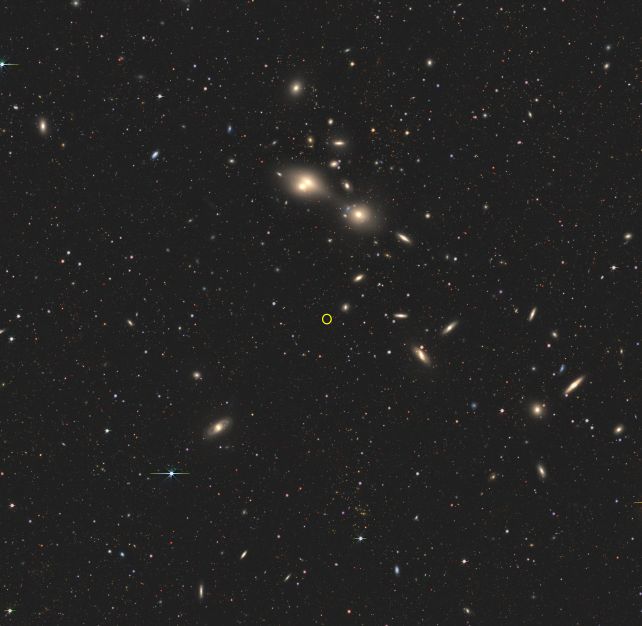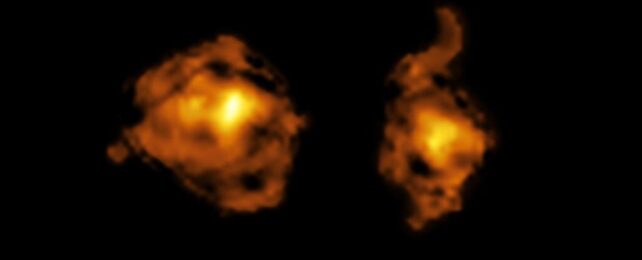The moment one galaxy spears another with a powerful beam of radiation shooting from its central black hole has been spotted in a distant galactic collision.
It's the first time we've seen this kind of interaction in an ongoing galactic merger, and the effects on the 'wounded' galaxy are pretty devastating, suppressing star formation as the beam of radiation clears the clouds from which baby stars are born.
The team of researchers that discovered the system has named it the 'cosmic joust'.
"Here we see for the first time the effect of a quasar's radiation directly on the internal structure of the gas in an otherwise regular galaxy," says astronomer Sergei Balashev of the Ioffe Institute in Russia, who co-led the research with Pasquier Noterdaeme of the Institut d'Astrophysique de Paris in France.

Throughout the Universe, nearly as far back as our telescopes can see, astronomers have found and studied galactic collisions. The Universe is not a random, disconnected hodgepodge of galaxies, but is connected by a vast, invisible web of dark matter that gravitationally channels galaxies into clusters, where they often collide and merge to form bigger galaxies.
This activity is thought to play a major role in galactic growth and evolution, and the growth of the supermassive black holes at their cores. It's a long, slow process on human timescales, playing out over millions of years as galaxies move close enough to be snared by each other's gravity, swooping past each other repeatedly in ever-shrinking orbits until they finally come together to form one galaxy.

The repeated swooping stage is where the cosmic joust is at now, but with one key difference: one of the galaxies is a quasar. That's what happens when the supermassive black hole at the center of a galaxy is feeding at a tremendous rate from a giant cloud of material swirling around it.
The gravitational and frictional forces at play heat this cloud to temperatures of millions of degrees, causing it to blaze with light. But there's another effect too: some of the material swirling towards the black hole gets diverted and accelerated along the magnetic field lines around the outside of the event horizon to the poles, where it is launched into space at tremendous speeds approaching that of light.
In the case of the cosmic joust, when the quasar swoops past the other galaxy at speeds of around 500 kilometers (310 miles) per second, its jets blast into its sparring partner. That disrupts the star-forming clouds of dust and gas therein, leaving very little behind and thereby suppressing star formation activity.

Some of the wounded galaxy's gas also gets gravitationally purloined by the quasar galaxy. This gas makes its way to the galactic center to add fuel to the black hole's rampage.
The quasar activity isn't exactly healthy for star formation in its own galaxy, either. As the black hole frenziedly guzzles down material, it blasts out powerful black hole winds in all directions. These high-speed outflows push away and clear the host galaxy's own star-forming material, a process known as quenching (because it quenches star formation).
While both galaxies are undergoing some tribulations, their ongoing interaction offers hope for new life. When galaxies collide, their gas reservoirs also collide, with shocks between them creating regions of over-density, the gravitational collapse of which germinates the seeds of new stars.
Sometimes, it takes a bit of disruption to ignite a new stage of life… even for galaxies in the infancy of the Universe.
The team's research has been published in Nature.
